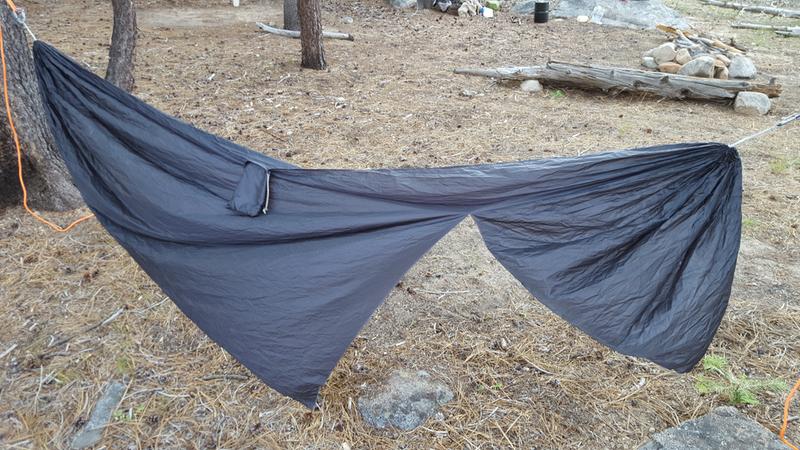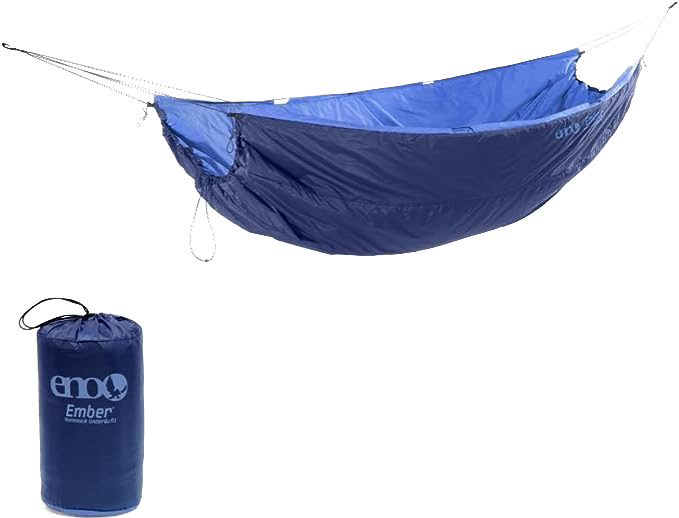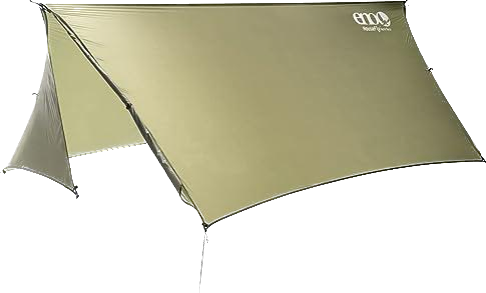Finding a hole or rip in your favorite hammock can be a big disappointment and a big problem, especially when you’re hammocking in the woods. If you don’t repair your hammock quickly, a small hole or tear could turn into something worse and seriously damage your hammock.
However, in most cases, you can easily do a hammock repair using tools that you can buy in specialized stores or that you might even have in your home.
With the tips that you’ll find in this guide, you’ll be able to repair your hammock easily and quickly and extend its useful life for years to come.
Assess if the hammock is repairable – Can your hammock be repaired?
In most circumstances, hammocks can be repaired. Rope or woven hammocks can be restrung with new strings and single-piece hammocks can be patched. The size and location of the damaged area will also affect the repair of the hammock. Hammocks with tears or holes greater than 2 inches in diameter are not recommended for saving and repairing.
Type of hammock
There are three types of hammocks in the market: those made from nylon or parachute fabric, those made from a single piece of cotton fabric, and the Mayan-style woven hammocks. Hammocks made from a single piece of fabric are much easier to repair than those with a hand-woven hammock. Single piece hammocks
This guide is for single-piece cotton fabric hammocks. If you’re needing to repair a rope hammock check out our DIY Guide: How to Repair a Rope Hammock.
The severity of the damage
If the size of the hole or tear is 2 inches or less, you can easily repair your hammock. But if the damage exceeds 2 inches, there is a high risk that it will continue to grow, even after the repair.
The location of the damage can affect the repair
If the damaged area is on the sides or ends of the hammock, a simple patch job should fix the hammock without any issues. However, if the damage is in the center, or where the hammock receives the most weight, the chances of the damage spreading are high. You will want to use a higher-rated patching kit and keep an eye on the repair.
Tip:
Always check your hammock for signs before using it to prevent any damage from getting worse due to use.
How to patch a hole in a hammock
Note:
Nowadays, the most used hammocks for camping are those made of nylon, mainly due to the advantages they offer — price, portability, great suspension systems, low weight, etc. For this reason, this guide focuses mainly on the repair of this type of hammock.
For hammocks made from a single piece of cotton, the repair is quite similar, except that patches of cloth, a needle, and thread are used instead of glue.
What you will need:
- A hammock repair kit (TEAR-AID, GEAR AID, ENO)
- Scissors
- Plastic spatula (optional)
But in case you have trouble finding these kits, you can also use:
- Seam Grip (or other similar)
- Some rems of ripstop nylon
- Scissors Plastic spatula (optional)
- Gloves (optional)
1.- Set up your hammock
Setting up your hammock before attempting the repair will make it easier to find and assess the damage, especially very small holes, and tears. When the hammock is set up, the fabric remains fully stretched, and light filters through these spots.
2.- Prepare the patches
When using a hammock repair kit, you’ll want to take out two patches – one for the top and bottom of the hammock. These patches should be cut to match the damaged area of your hammock. Ideally, you will want a patch to be 1-2 inches larger than the hole or area you are patching.
If you don’t have the kit, cut two pieces of nylon fabric to use as patches.
In both cases, try to give the patches a rounded shape.
3.- Properly clean and prepare the area for the repair
Prior to applying any glue or sealer to the hammock, you should ensure the area is clean. If the glue is applied to an area that isn’t properly prepared, it can compromise the bond and ultimately the repair.
Remove any type of debris around the damaged area. I recommend using an alcohol pred pad. Make sure the surface is completely dry before moving on to the next step.
4.- Seal the hole on the hammock fabric
Repair kit patches are usually self-adhesive, so just peel the backing off the patch slightly, then place the glued part over the hole in the hammock. Continuously press with your fingers or a spatula to prevent bubbles from forming. Repeat this procedure for the other side of the damaged area.
If you’re going to use Seam Grip, apply the glue evenly to one side of the damaged area using a small brush — usually included in the package — and apply pressure to the piece of nylon fabric with your fingers or a spatula. Repeat this procedure for the other side of the damaged area.
5.- Let the glue fully dry – Keep out of directed sunlight
Self-adhesive patches usually come with a highly aggressive glue that usually dries in a matter of hours or minutes, depending on the brand. Check the packaging for the drying time and place the hammock in a dry, ventilated area away from sunlight.
Seam Grip typically requires more time to dry completely, usually 2-8 hours. Place some heavy objects on the repaired area for as long as necessary to ensure good adhesion.
6.- Enjoy your hammock – Hammock patch repairs can last for years
After the glue has dried, check the patch for bubbles to make sure the hole is fully covered and repaired.
Generally, these types of patch and glue repairs can secure the damaged area for months or even years, so you can get back to enjoying your hammock with confidence and peace of mind. Just keep an eye on it and make sure to be extra careful when washing your hammock.
How to repair a ripped hammock
Although this type of repair is very similar to the previous one, due to the way the threads of the fabric break and separate in a tear, it’s necessary to reinforce the damaged area a little more by sewing the tear to prevent the threads from continuing to separate.
What you will need:
- A hammock repair kit (TEAR-AID, GEAR AID or ENO)
- Scissors
- Plastic spatula (optional)
- A sewing kit
If you’re having trouble finding these kits, you can also use:
- Seam Grip
- Some rems of ripstop nylon
- Scissors
- A sewing kit
- Plastic spatula (optional)
- Gloves (optional)
1.- Set up your hammock
Set up your hammock to find damage more easily by allowing light to filter through the rips.
2.- Prepare the patches
If you’re going to use a repair kit, just remove the sheet from the packaging and cut two pieces of the patch to a size that extends about one inch from the damaged area.
If you are going to use nylon fabric follow the same procedure, but make sure you round the edges of the patches in both cases.
3.- Clean the damaged area
Preferably, use an alcohol prep pad to remove any grease or grime adhering to the surface. Make sure the surface is completely dry.
4.- Sew the tear with a needle and thread
Cross-stitch the rip, making sure the surface is perfectly smooth and wrinkle-free. Also, verify that the seam is solid to hold the two ends of the rip in place.
Try to use a needle with the smallest diameter possible, while it’s also comfortable to use. The idea is not to leave too large holes in the surface around the tear.
5.- Seal the tear on the hammock
If you’re using a repair kit, carefully peel off a piece of the backing paper from the patch and place the glued part over the tear. Press down with your fingers or a spatula to make sure there are no bubbles. Repeat this procedure for the other side of the damaged area.
If you use Seam Grip, first apply the glue evenly to one side of the damaged area with a small brush. Next, place a piece of nylon and apply pressure with your fingers or a spatula. Repeat the procedure for the other side of the damaged area.
6.- Wait for the glue to dry completely
The glue on self-adhesive patches tends to dry very quickly, usually within hours or minutes. Check the drying time on the packaging instructions and place the hammock in a dry, ventilated area, but away from direct sunlight.
Depending on the brand and type, Seam Grip may require 2-8 hours to dry completely. Check the drying time in the instructions and place something heavy on the repaired area and your hammock in a dry, ventilated area away from sunlight.
7.- Your hammock is like new!
Once the drying time has passed, make sure the patch is free of bubbles and well adhered to the surface. With this repair, you can enjoy your favorite hammock again for months or even years, depending on the quality of the materials you used.
Why do hammocks develop holes or rips?
Generally, hammocks develop holes and tears due to accidents that occur during normal use, especially since this type of gear is used in the wild. Some of these circumstances include:
- A wild spark or charcoal from a campfire
- A knife or scissors that hits or grazes the hammock
- Pets or wild animals that climb on the hammock and pierce it with their teeth or claws
- Accidental contact with sharp natural objects, such as rocks or tree branches
However, a lack of proper care when storing your hammock can weaken the material over time, making it more prone to damage. This is especially true when the hammock material is not high-quality. Some of the things that can deteriorate a hammock when not properly stored include mold — due to moisture — UV rays, rodents, and insects.
How to prevent my hammock from developing holes or rips?
Although some hammock brands may last longer than others, with time, overuse, and other adverse conditions, any hammock fabric will eventually weaken and get damaged. However, with proper care, your favorite hammock can last for many years without serious damage that prevents its use. Here are some tips.
Don’t exceed the weight limit
Make sure to find out what weight limit your hammock can support, as putting on too much weight will damage the fibers faster than normal.
Protect your hammock from extreme weather
Always protect your hammock from weather conditions such as snow, rain, and strong winds, as these can cause excessive deterioration.
Don’t leave your hammock outside for long periods
Don’t leave your hammock exposed to the elements if you know that you aren’t going to use it for a long period of time. It’s better to store it in a dry and cool place. In our article Can Hammocks Be Left Outside, we go over the effects of leaving a hammock outside and how to care for it.
Keep your hammock clean
Clean your hammock after each use to prevent natural debris like leaves, dirt, and small rocks from allowing bacteria and mold growth — or scratches on the surface. And when you wash your hammock, avoid using a washing machine.
For questions about how long a hammock lasts, check out our article The Lifespan of a Hammock: How Long Will it Last?



 Hello there, we're Vira Outdoors!
Hello there, we're Vira Outdoors!

